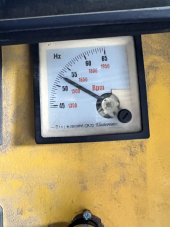The generator, its voltage and frequency are not affected, nor controlled by the inverter other than simply presenting as a load to the generator, regardless as to where the consumption ends up going.Is the voltage or frequency can affect the generator charging on off? If the generator has up and down frequency ?
I don't think there is any way for the inverter to sync the generator to the rest of the system, this is why you can either have grid or generator input but not both at the same time.
Rather than syncing the generator to the rest of the system, the inverter will sync the rest of the system to the generator. A good inverter generator will have a very steady and accurate frequency that should not change at all and remain constant. If the generator has inconsistent frequency output then that will propagate through the inverter to the loads as well.
Extra power draw can affect voltage output of the generator but it should not have much effect as long as the power draw is within its rated capacity.
The reason the inverter has a on/off threshold of battery charge level for a generator is so it can present a constant load to the generator (the limit set in the inverter) and do the load management within the inverter by sending generator power to loads and/or battery as the real load on the inverter changes. This is the most optimal way to use a generator, a constant load within the peak optimum performance window of the generator's efficiency curve.
If you don't have a generator that can perform automatic start/stop via remote wire then you will have to manually ensure that you turn on/off the generator as your battery charges/depletes. Portable emergency generators are not ideal for this scenario, but depending on your use case and needs, manual generator control and refueling could be an acceptable compromise without the need to install a whole house generator that is permanently connected to a gas line.
For an off-grid setup where the generator likely has to be ran on a somewhat regular basis depending on daylight or extended cloudy periods, an automatic generator with a constant fuel source is almost a must.
In an on-grid PV system where the generator is strictly there when you have a perfect storm of conditions of low solar radiation, extreme cold/heat event and no grid-power I think it's a lot more palatable to have a portable generator providing temporary relief and charge for the batteries.



